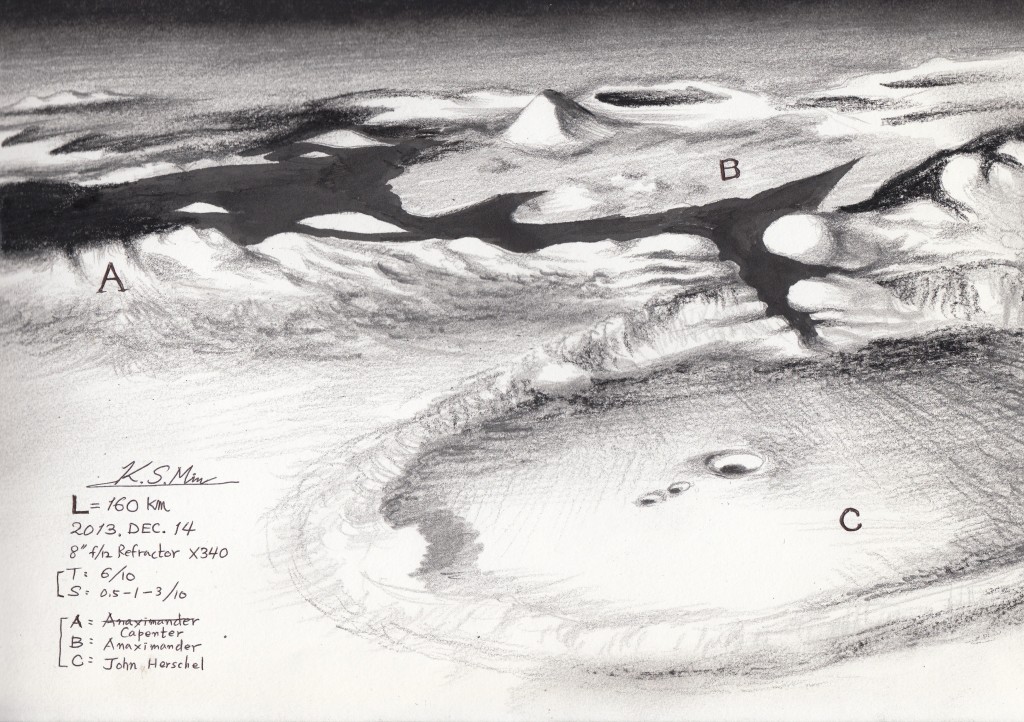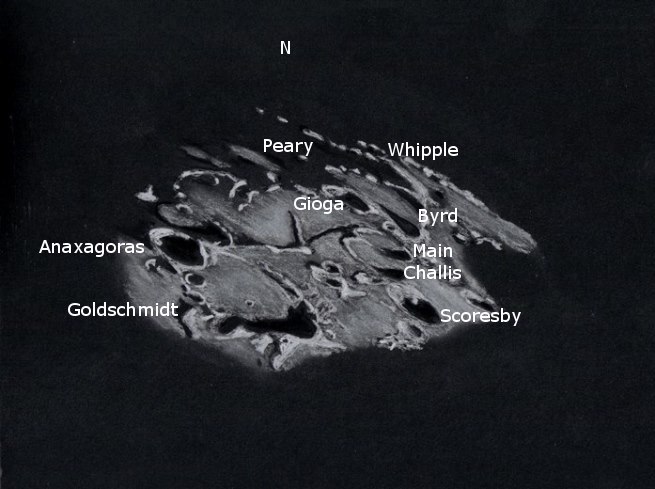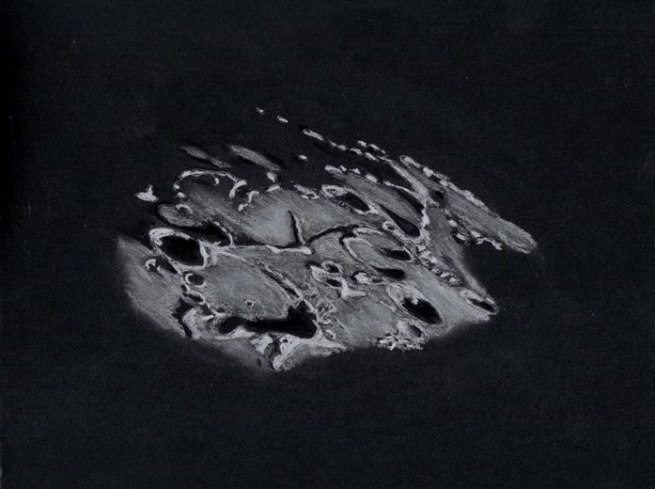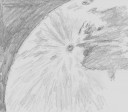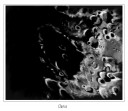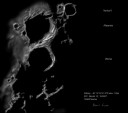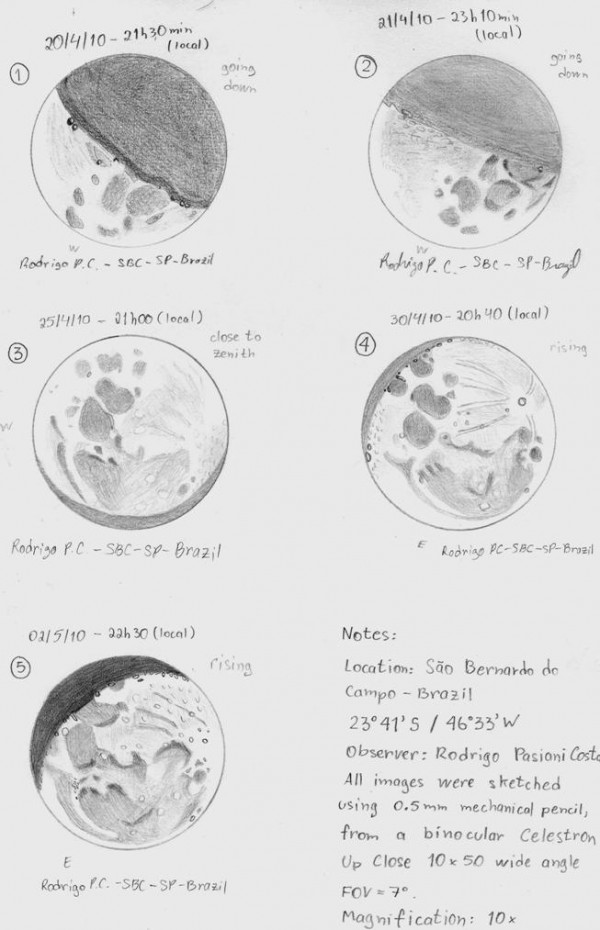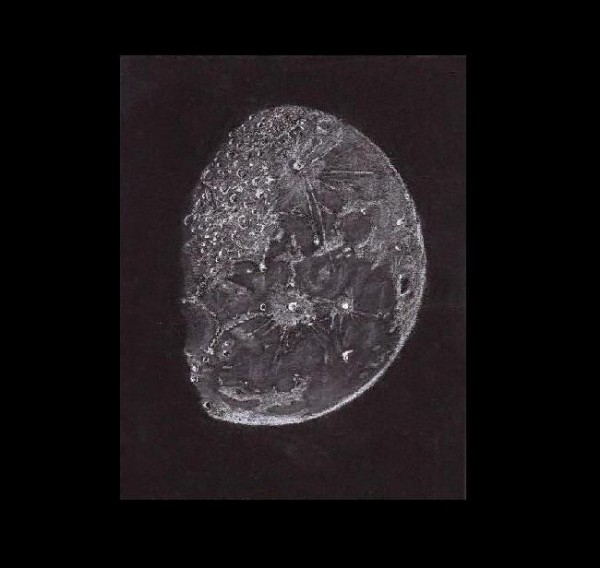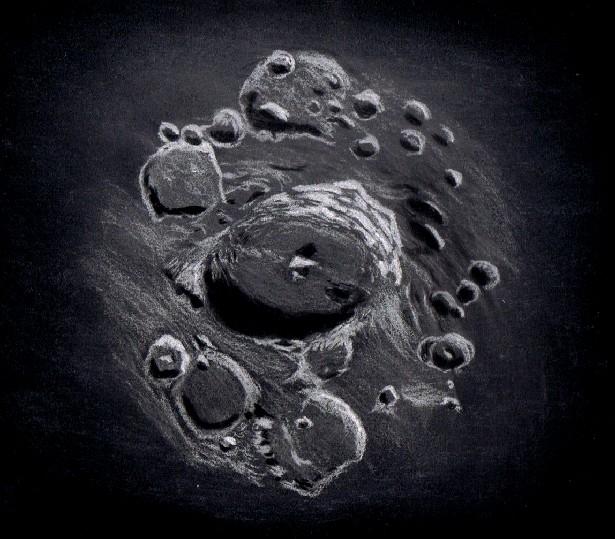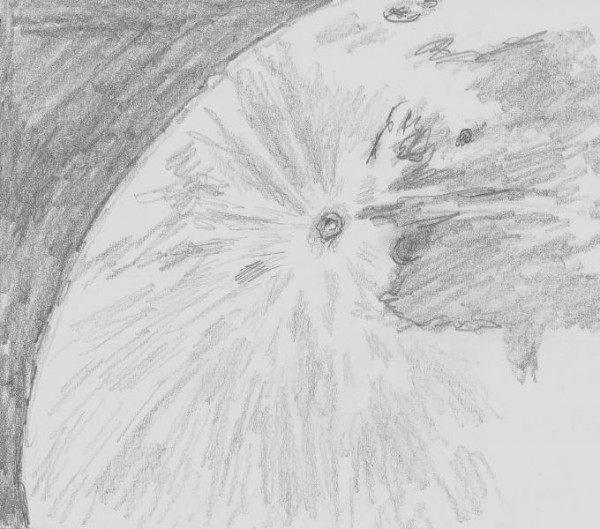
Object name: Lunar crater Tycho and rays
Object Type: Lunar crater, rays
Location: York, UK
Date: 18th March 2011
Time: 20.30-20.40 UT
Media: graphite pencil, white paper
Instrument: Skywatcher Skyliner 152mm f8 Dobsonian, 25mm e.p.
As I took in the beauty of the full moon at perigee, I noticed a small black object zip across the face of the moon. I thought I’d probably seen a satellite, but, a minute or two later I saw another one, and then another one, and then another, and they were definitely birds. They were all travelling in the same direction: North. After waiting about half an hour and seeing about twenty of them, and trying to take in the jizz of the form, the best I could do was narrow them down to swallows and martins. Do they migrate at night? Well, if so, this was a unique way to see my first hirundines of the year.
Seeing was very wobbly, preventing me from using high powers on the scope, so I eased back into low power and sketched the crater Tycho and its rays, which you can also see with the naked eye as they splat half way across the face of the full moon. I like sketching fast; it forces me to find the key features first. Tycho itself is not huge as lunar craters go, but it’s visible because it’s young and its rays have not yet eroded away. It’s estimated to be about 100 million years old which means that some dinosaurs and mammals probably saw it hit; it must have been spectacular.
The crater is named after Tycho Brahe, one of my heros. His accurate measurements of the stars and planets led to the later discovery, by Kepler, that the planets move in elliptical orbits around the sun, which in turn is the basis of universal gravitation. It’s not an exaggeration to say that Tycho paved the way for our modern understanding of the universe. And he has a rather beautiful crater named after him too.
One of the things that I spotted for the first time was that there are fewer bright rays pointing west (top in the picture), suggesting that the impactor that formed Tycho came in from that direction.
